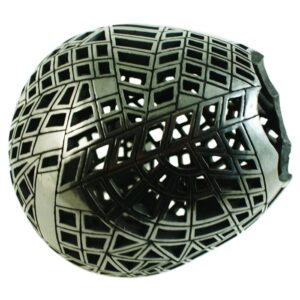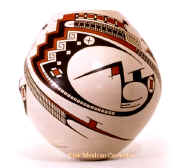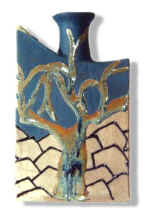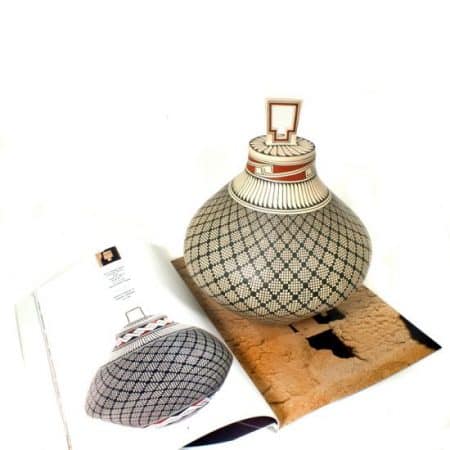Red ware, which is used to make everything from large cooking pots to rice dishes to table dishes, is typical of Michoacan. The characteristic decoration of these dishes are small flowers made with the thick part of the paintbrush, with white or green paint around a small black circle, as if it were a margarita (the flower, of course!).

Barro Negro by Omar Fabian
In Oaxaca, the town of San Bartolo is famous for its barro negro, black clay. The artwork made with this clay acquires its color through the pigments in the polishing process, which brings out the red color from inside the clay. The reduction firing, limiting oxygen, creates the black color. There are some more recent techniques that bring out a mixture of the natural dark and light tones of the clay, which artists protectively keep to themselves.

The small town of Mata Ortiz, Chihuahua stands out for its beautiful pottery as well. It was here that they reinvented pre-Hispanic ceramics techniques after shards of ancient pottery were found in the ruins ofPaquimé. This renaissance was mostly due to Juan Quezada, outstanding Master Potter of Mata Ortiz.
Some Mexican creators have implemented new forms and new designs for typical Mexican artwork, such as ceramic eggs from which little frogs are born, lizards and other little animals; glass and ceramic twisters; key chains with eclipses; masks with a pre-Hispanic or oriental motif; dish sets with images of Tamayo or Rivera; tiles with geometrical figures, etc.

In the 1950s, High Temperature ceramics or stoneware appeared in Mexico. The origin of this type of ceramics is from China, Korea and Japan. This technique was introduced to Mexico by a small group of Mexican ceramic artists who studied abroad, mainly in Japan and the United States. Little by little, it caught on, and these days there are several regional centers in which artists work with Stoneware, such as Michoacan, Veracruz and Jalisco.
As we can see, Mexican pottery bring together the influences of pre-Hispanic, European, Arabic and Oriental cultures. Whatever technique is used, Mexican ceramics have an individuality and “flavor” that is appreciated for its art and quality worldwide.
Oscar Guzmán and May Herz


